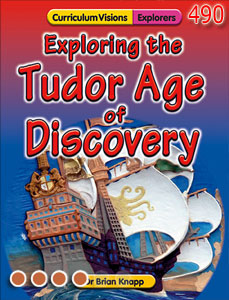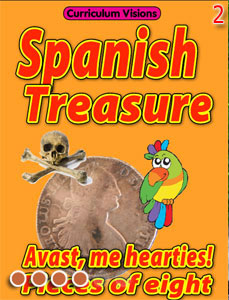Piracy is robbery or violence at sea or of places along the shore due to a raid by ship. The people who do it are called pirates.
Piracy has existed down the ages. It was certainly a feature of anyone who sailed the Mediterranean as far back as Ancient Egyptian times. In those days people were taken to be sold as slaves and were often more valuable than any cargo they were carrying.
Small states grew up along many coasts. And it was not just small merchant ships that suffered. In 75 BC Julius Caesar was kidnapped by Cilician pirates who demanded ransom.
From Roman times, too, the peoples of the coast of NorthWest Europe raided the coast of Roman Gaul and England (then called Britannia). These were the Saxons, and a whole naval fleet was used by the Romans to keep the southern shore of England (known as the Saxon Shore) free of raids.
The most famous pirates of the Dark Ages in Europe were the Vikings, who came from the Scandinavian lands in fast longboats to raid the shores of other countries. In Britain they mainly raided from the 8th to the 10th centuries, but their raiding lasted to the 12th century elsewhere. They raided as far south as Spain, North Africa and Italy.
During the time called the Middle Ages, from the 11th to 16th centuries, there were almost no powerful rulers in Europe and so many areas had fleets under the control of local war lords who went out to plunder ships and other coasts. This was probably the time where there were the most pirates in Europe.
The Moors were famous Middle Ages pirates. They set up and controlled ports along the coast of southern France and northern Italy. They were so powerful that they could attack cities as important and powerful as Venice.
Pirates were rarely caught. The first known English pirate to be caught was William Maurice, who was executed in 1241.
But it was not just Europe that suffered. In East Asia by the ninth century, coastal ports were also under attack. They used ships we know as junks. They specialised in attacking the merchant ships on the silk and spice routes between Europe and Asia.
The Barbary pirates, also known as corsairs, were Muslim pirates who operated from North Africa (which was known as the "Barbary Coast"). These pirates sailed out of Algiers, Tunis, and Tripoli and were known as the Barbary corsairs. They began by attacking Crusader ships in the 12th century and continued right up to the beginning of the 19th century. It is thought that over a million Europeans were captured by Barbary corsairs and sold as slaves in North Africa between the 16th and 19th centuries.
All of these acts of piracy were probably more important than the ones that are most famous - the pirates of the Caribbean Sea. This is known as the 'golden age of piracy'. It lasted between 1650 and the 1720s. This was the time when European countries were building up their colonies in America. So there were many ships going between Europe and the colonies and so there was much money to be made by being a pirate at that time. The most profitable of all were the treasure ships going back from the Spanish Main coast of Mexico to Spain, and this forced these ships to move in convoys, heavily protected by man-o-war ships.
Some of the pirates were known as buccaneers. Sometimes it was in one country's interests to shelter pirates if they preyed on ships belonging to another. For example, the English captured Jamaica from Spain in 1655, and then the English governors allowed the buccaneers safe haven. At the same time, the growth of Port Royal gave the pirates a place to sell their booty.
Bartholomew Roberts was the pirate with most captures during the Golden Age of Piracy. He even hanged the governor of Martinique from the yardarm of his ship.
The New and Middle England American colonies were all for joining in this trade, and provided a home for the pirates. They mostly sailed to the Indian Ocean where luxury goods like silk and calico were being traded. It had the added advantage that, unlike the Atlantic, there were no powerful navies to guard the ships. Pirates Thomas Tew, Henry Every, Robert Culliford and William Kidd all plied this 'trade'.
Ships sailing between Africa, the Caribbean, and Europe rose in the 18th century. It was known as the triangular trade. Ships sailed from Europe to the African coast, trading manufactured goods and weapons. Here they exchanged them for African slaves. The traders then sailed to the Caribbean to sell the slaves to plantation owners to work on farms. Finally, they returned to Europe with sugar, tobacco and cocoa. This was another rich source for pirates.
Among the most famous pirates were Edward Teach or Blackbeard, Calico Jack Rackham and Bartholomew Roberts. These pirates were hunted down by the Royal Navy and killed or captured.
In fact, Britain began to try to stop piracy in the 18th century, because Britain now had a world-wide empire and piracy was damaging its trade. Six hundred pirates were executed, but even so, this was probably no more than ten percent of the total number of pirates just in the Caribbean.
In 1670 the English navy had just two vessels trying to combat pirates. By 1718, the (now) British Royal Navy had 124 vessels, and this had increased to 214 by 1815. At the same time, pirates were no longer given safe haven in ports. As a result, piracy faded away. The most famous event was when the HMS Swallow cornered pirate Bartholomew Roberts in 1722, shooting a fatal broadside that killed the pirate captain instantly.
Although popular stories tell of buried treasure, pirates did not bury their treasure. They either used them themselves or sold them on in the safe ports. There was no need to bury treasure. Pirates rarely killed people on captured ships either because, if it were known that people would be spared, they would surrender more easily, making pirating all the easier in turn.
Pirates did tend to wear ear-rings, often made of gold. This was for the practical reason that the ear-ring would be used as payment for the pirate's burial.
Privateers
There was another class of pirate - one that countries supported. These pirates supported by governments were called privateers. For example, Elizabeth I of England supported Sir Francis Drake so that he could attack the Spanish ships of the Spanish Main and share the treasure with her. At that time England was poor and needed all the money it could get, by whatever means.
England was not alone in this. The United States Constitution of 1787 authorised Congress to issue 'contracts' between the government and the privateer, so that this could be shown to any foreign navy. It meant that a privateer could not be charged with piracy while attacking the targets named in his commission. All countries abided by this, except the Spanish, who would execute foreign privateers with their letters of commission hung around their necks.
Privateers were actually a large proportion of the total military force at sea during the 17th and 18th centuries. During the American Revolution, about 55,000 American seamen served aboard the privateers, which had 1,700 ships. Throughout the American Civil War, Confederate privateers successfully attacked Union merchant ships.
As you will know from the news today, pirating is not a thing of the past, but continues today, especially in the China Sea and the Indian Ocean off the coast of Africa.






